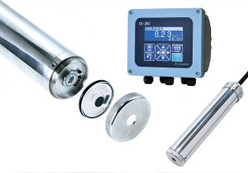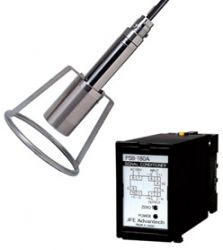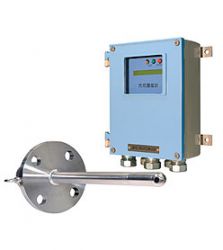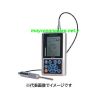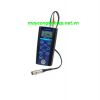Thương hiệu - Kính hiển vi
- Cân điện tử
- Máy đo lường các loại
- Máy đo 3 chiều CMM
- Máy đo độ cứng
- Profile projector
- Máy đo độ nhám
- Smart Scope
- Thiết bi đo mới
- Chuẩn Bị Mẫu
- Máy kiểm tra bánh răng
- dau mo cong nghiep
- may cong nghiep
- Air Micrometer
- Máy kiểm tra lò xo, spring testing machine
- ATAGO
- Kanetec
- Vertex
- IMV
- Sotec
- RION
- COSMOS
- LINE SEIKI
- Sekisui
- GRAPHTEC
- HORIBA
- EXTECH
- TAYLOR HOBSON
- THREE-IN-ONE
- DENSO
- TOEI
- KORI SEIKI
- NANOTEC
- WJIT
- RUIBAO
- AMITTARI
- LANDTEK
- OEM
- HUATEC
- ALIYIQI
- LINSHANG
- GIM
- CEM
- DASQUA
- SHUANG LU
- MITSUBOSHI
- ONO SOKKI
- SANHE
- TMK
- AUTONICS
- JAKON
- ZONHOW
- ALEX
- ECHOTECH
- GASTEC
- AIGU
- BOLE
- KSJ
- LEEB
- GIM
- TAKASHIMA KEIKI
- BING M
- MASTECH
- ELITECH
- ANRITSU
- WALTER
- AS ONE
- PCE
- HTI
- RIKEN KEIKI
- RKC
- SMART SENSOR
- MIGISHITA
- SLYB
- KYOTO
- HUATO
- GREENTEST
- Sanko Seikohjyo
- ACCRETECH
- ACO
- May do do PH
- Dụng cụ cắt gọt kim loại/ dao kỹ thuật/Cutting tool
- BĂNG TẢI
- Động cơ điện - Motor giảm tốc
- MACHINE TOOLS
- Thiết bị đo PCE-Anh
- Thiet bi do Laserline
- KIMO-Phap
- NIIGATA SEIKI
- BESTOOL-KANON
- HOZAN
- HAKKO
- FUJI TOOL
- SEKONIC CORPORATION
- YAMAMOTO SCIENTIFIC TOOL LABORATORY
- JFE ADVANTEC CO.,LTD.
- CEDAR
- SANKO ELECTRIC
- KETT
- ATAGO
- SUCESS
- OSG
- ISSOKU
- SHIMPO
- SHINKO DENSHI
- A & D
- HIOKI
- SANWA
- DAICHI KEIKI
- NAGANO KEIKI
- KANETEC
- OBISHI
- TECLOCK
- PEACOCK
- CITIZEN
- DIATEST
- MAGNESCALE
- IMADA
- TOHNICHI
- AIKOH
- MITUTOYO
- VESSEL
- ENDO
- URYU
- SIMCO
- OBA
- SATO
- DOM
- OTSUKA
- PEAK
- CARTON
- KANOMAX
- KYORITSU
- EISEN-Pin gauge
- VISION ENGINEERING
- TECPEL
- KURODA
- NPK-Air Tool
- TRIENS
- NICHIDO
- HATAYA
- YODOGAWA-Dust Collection
- MÁY ĐO ĐỘ CỨNG
- NITTO KOHKI
- OJIYAS
- ASAHI
- METROLOGY
- NIKON
- ELECTRONICA
- HEXAGON
- BYC MICROSCOPE
- SOBEK
- CHINO
- YOKOGAWA
- THIẾT BỊ MÀI ĐÁNH BÓNG
- TandD
- THIẾT BỊ TỰ ĐỘNG HOÁ
- SẢN PHẨM KHUYẾN MÃI
- THIẾT BỊ ĐÃ QUA SỬ DỤNG
- ATTONIC
- HIOS
- FLUKE
- OMEGA
- INSIZE
- TOGOSHI
- UNITTA
- RSK
- Renishaw
- KITAGAWA
- KIKUCHI
- ISUZU SEISAKUSHO
- HOKUSO
- KITO-PALANG
- TOYO KOKEN
Danh mục sản phẩm
Dịch vụ sửa chữa
Hỗ trợ trực tuyến
Bộ đếm truy cập
 | Đang online | 27 |
 | Hôm nay | 1127 |
 | Hôm qua | 1695 |
 | Tuần này | 2822 |
 | Tháng này | 53439 |
 | Tất cả | 4824252 |
Máy đo dộ cứng cầm tay JFE Advantech SH-21A, Hand-held hardness tester
- Tên sản phẩm: Máy đo dộ cứng cầm tay JFE Advantech SH-21A, Hand-held hardness tester
- Model: Máy đo dộ cứng cầm tay JFE Advantech SH-21A, Hand-held hardness tester
- Tiêu chuẩn: JIS
- Xuất xứ: Japan
- Đơn giá: lien he ()
- Bảo hành: 12 Tháng
- Model khác: Máy đo dộ cứng cầm tay JFE Advantech SH-21A, Hand-held hardness tester
Đặt hàng
MÔ TẢ SẢN PHẨM
Máy đo dộ cứng cầm tay JFE Advantech SH-21A
The SH-21A is very easy to use and requires no special knowledge of hardness testing in order to operate the instrument. The unit includes all four hardness scales and you can switch between them at the touch of a button.
Measurement Principle
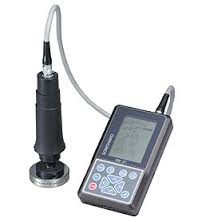
Applications
· Evaluation of carburizing, standard quenching and high-frequency quenching
· Weld hardness measurement for welded structures (tanks, hulls, bridges, steel towers ,etc.)
· Hardness measurement for a gear tooth flank (narrow area)
· Measurement of structural strength or hardness of a facility
· 100% online inspection for components (engine valves, rack bars, crankshafts, bearings, etc.)
Specifications
|
Measuring Indenter |
Diamond indenter for Micro-Vickers (facing-to-surface angle of 136 deg) |
|
Measuring load |
Approx 1kgf (roughly 10N) |
|
Measuring range |
Rockwell hardness: HRC10.0 to HRC70.0 |
|
Reproducibility |
HRC:± 1.0HRC , HV : ± (3%rdg)HV , HS: ± 1.0HS , HB : ± (3%rdg)HB |
|
Power source |
AC adapter (100 to 240V) or lithium ion rechargeable battery |
|
Minimum target size |
15 mm (width) x 15 mm (length) x 7 mm (thickness) |
Measuring Stand (option)
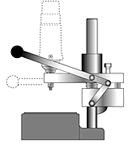
When mounted on the measuring stand, the tester can be used as a stationary hardness tester.
This compact, lightweight checker (2.5kg) can be carried around on-site.
Measurement Principle
The Handy Hardness Tester model SH-21A differs completely from traditional hardness testers. Instead of measuring the size of the indentation of the test sample using a microscope, it uses a diamond indenter equipped with a vibrating rod that presses on the test surface at a fixed load and then measures its hardness by applying ultrasonic vibrations and analyzing its damping effect. When the vibration rod is applied to a soft-surfaced test sample with identical qualities and at a fixed force, it makes a deep indentation and gets locked into the groove. Due to this, the resonance frequency increases. Conversely, it does not get locked in when used on hard test samples and the resonance frequency drops. The test sample's hardness can be calculated using the correlation between this deviation and the tested hardness.
Measurement Principle
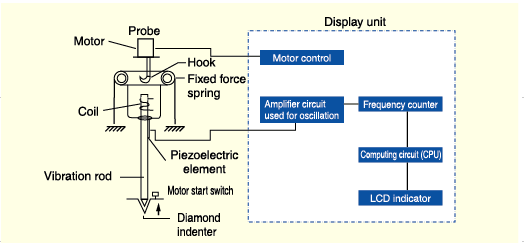
Sản phẩm liên quan
-
Giá: liên hệ
-
Giá: lien he
-
Giá: liên hệ
-
Giá: liên hệ
-
Giá: lien he
-
Giá: liên hệ
-
Giá: lien he
-
Giá: liên hệ
-
Giá: liên hệ
-
Giá: liên hệ
-
Giá: liên hệ
-
Giá: liên hệ
-
Giá: liên hệ
-
Giá: liên hệ
-
Giá: liên hệ







